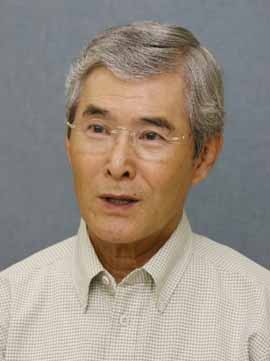Letters from A-bomb survivors to G8 Lower House Speakers, Part 3
Aug. 30, 2008
Touch the reality of the bombing to move toward nuclear abolition
by Susumu Yoneda, 68, former elementary school principal
To all the G8 lower house speakers participating in the summit, welcome to Hiroshima, site of an A-bombing. This gathering in Hiroshima to discuss “The Role of Parliaments for Peace and Disarmament” is very welcome. I sincerely hope you will take this opportunity to spend time learning about the reality of the atomic bombing while you are here.
I was exposed to the atomic bomb 1.5 kilometers from the hypocenter when I was 5 years old. The Hiroshima that I saw while being carried on my mother’s back was a horrible sight like something out of hell. The city was completely destroyed. People’s skin was melted and hundreds of wounded people passed through a sea of flames.
At that time my mother and I had been hospitalized with dysentery. We were pulled from the hospital building, which had collapsed. Several days later we began to suffer from acute radiation sickness. While our neighbors died one after another, for some reason we both survived.
But 29 years later, in 1974, my mother died, suffering from A-bomb-related diseases. At only 59, she died way too young.
This prompted me, as an elementary school teacher, to start a peace education program based on my experiences. I believed that if the A-bomb survivors recounted our experiences, people around the world would be moved to abolish nuclear weapons.
Then last October I was given the opportunity to talk about my experiences at a junior high school in the United States using pictures drawn by A-bomb survivors. After my talk, there was a lively, free-wheeling debate among the students.
One boy said that the dropping of the atomic bomb was the right thing to do because it had hastened the end of the war and saved 1 million lives. This prompted opposing views from many other students. One said he had felt the same way until hearing my story but that, while looking at the pictures, he had changed his mind and now believed America should not have dropped the bomb. When another student said she felt sorry for the many innocent civilians, including babies and the elderly, who were killed by the bomb, the room erupted in applause.
I felt we all understood the preciousness of life. On other occasions, too, people have told me that it was the first time they had heard the experiences of an A-bomb survivor, so I realized how important it is for the survivors to tell their stories to even more people.
In the past, Japan massacred many innocent people in Asian countries in the name of a “holy war.” I deeply regret this and would like to apologize to the people of Asia. At the same time, what happened at Hiroshima and Nagasaki must never happen again. And some kind of mechanism to ensure such a future has to be created as soon as possible.
There is a proverb that says, “A picture is worth a thousand words.” I would like to ask the lower house speakers of the major nations to take this opportunity to learn all about the horror of the atomic bombing while you are in Hiroshima. Listen closely to the survivors. As the leaders of your country’s legislatures, which represent the citizens of your nations, I sincerely hope that you will take concrete steps forward to see that nuclear weapons are finally abolished.
Susumu Yoneda
Mr. Yoneda was born in 1940. In 1944 he moved from Hatsukaichi City to Hiroshima City where he was exposed to the atomic bombing. From 1963, he was a teacher for 38 years, primarily at elementary schools in Hiroshima. Following his mother’s death in 1974, his father was stricken with multiple cancers and died in 1989. Mr. Yoneda took part in the exhumation of the remains of more than 10,000 A-bomb victims on Ninoshima Island, a site where survivors had been brought after the bombing. Since 1998 he has served as chairman of the Hiroshima City A-bombed Teachers Association.








